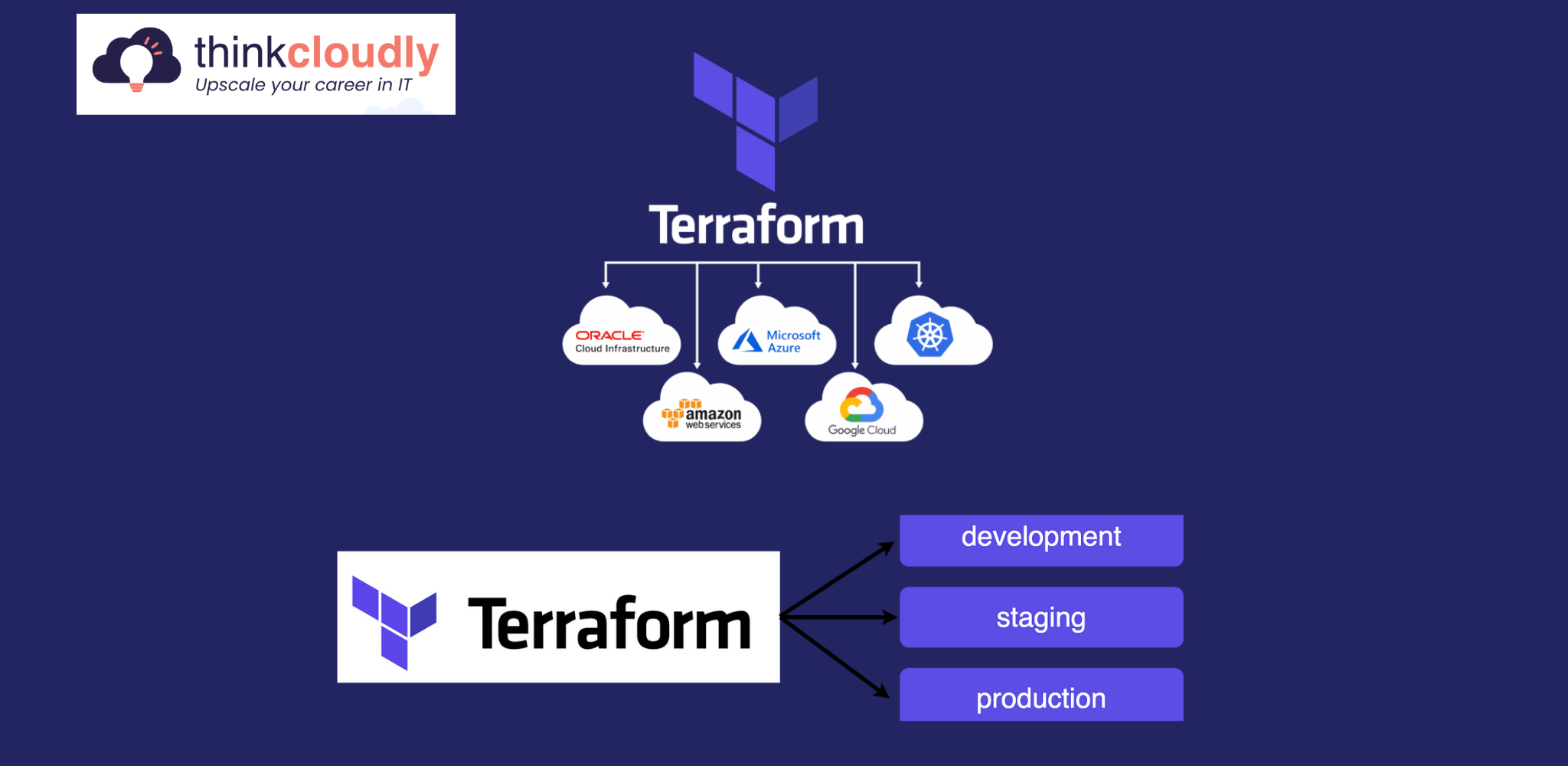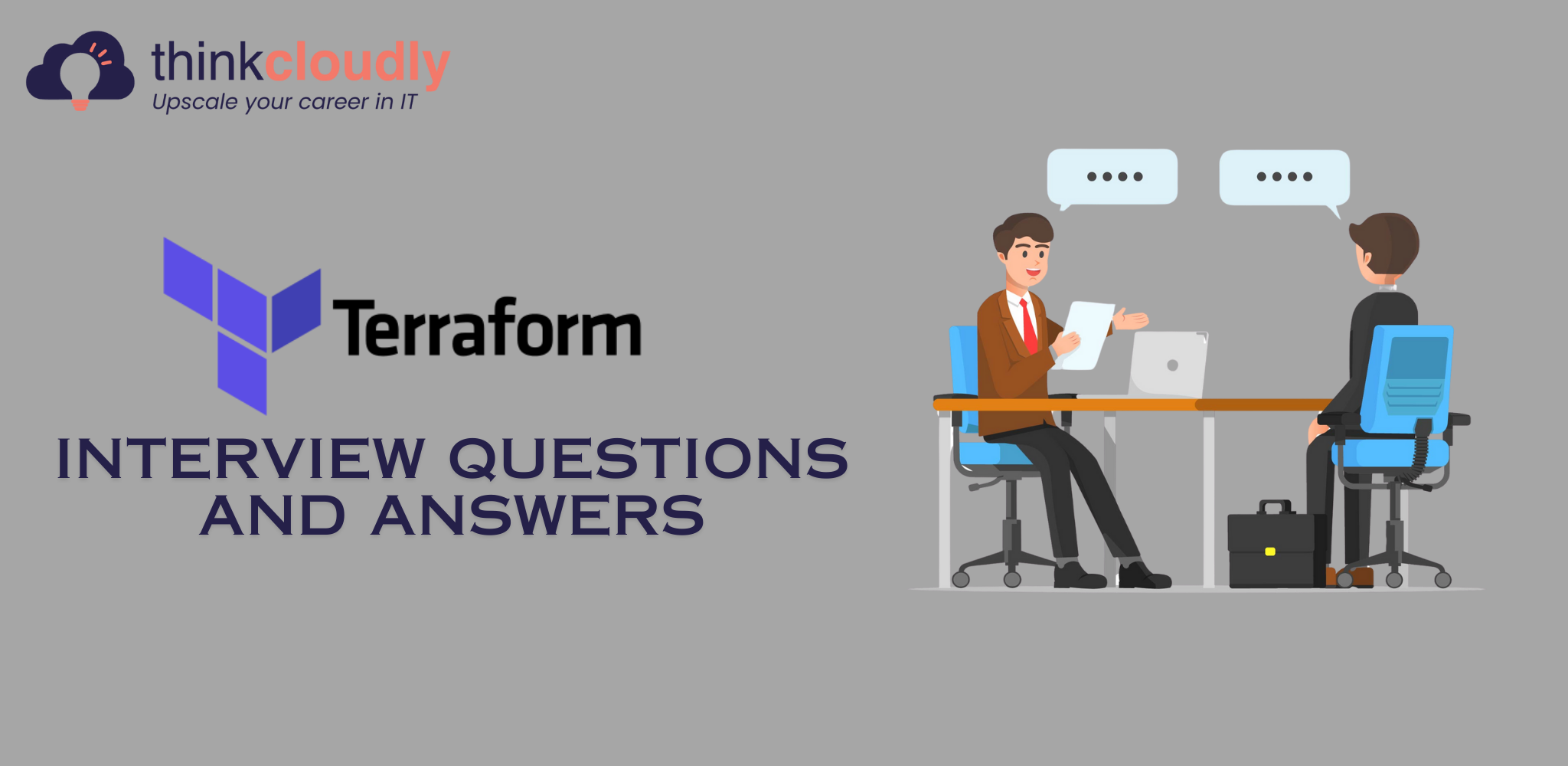Introduction
In the realm of DevOps and cloud infrastructure management, Terraform has emerged as a powerful tool, enabling automation, scalability, and efficiency. As organisations increasingly adopt Infrastructure as Code (IaC) principles, the demand for skilled Terraform practitioners continues to rise. Whether you’re a seasoned DevOps engineer or a candidate preparing for a job interview, mastering Terraform is a valuable skill. This blog post presents a curated list of essential topics such as Terraform basics, certification, tutorials, and a comparison with Ansible. Let’s dive into the world of Terraform and equip ourselves for success in DevOps interviews.
Terraform Interview Question and Answers
Q1.What is Terraform, and how does it differ from traditional configuration management tools?
Ans. Terraform is an open-source in an open-source Infrastructure as Code (IaC) tool used for provisioning and managing infrastructure. Unlike traditional tools that manage servers individually, Terraform uses declarative configuration files to define the desired state of infrastructure.
Q2. How does Terraform contribute to the automation of infrastructure deployment and management?
Ans. Terraform automates infrastructure provisioning by allowing users to define the desired state of their infrastructure in code. It then determines the necessary actions to reach that state and executes them.
Q3. Explain the concept of Infrastructure as Code (IaC) and its significance in DevOps.
Ans. IaC involves managing and provisioning infrastructure through machine-readable scripts files rather than physical hardware configuration or interactive configuration tools. It is important in DevOps for consistent and repeatable infrastructure deployments.
Q4 What are the key concepts of a Terraform configuration file, and what purpose does each serve?
Ans. Terraform configuration file includes the provider, resource, and variable blocks. Providers define the platform to use, resources define the infrastructure components, and variables allow for parameterisation.
Q5. Describe the Terraform workflow, including the phase of initialization, planning, and applying.
Ans. The workflow goes like:
- Initialisation: ‘terraform init’ initialises a working directory, downloading necessary plugins.
- Planning: ‘terraform plan’ examines the current state and determines the actions needed to reach the desired state.
- Applying: ‘terraform apply’ executes’ the planned changes to achieve the desired state.
Q6. What is the significance of the Terraform state file, and how is it managed in a collaborative environment?
Ans. The state file is a JSON file that tracks the current state of the infrastructure. In a collaborative environment, it should be stored remotely, typically in a shared storage system, to allow multiple team members to work on the same configuration.
Q7. Explain the difference between Terraform providers and provisioners.
Ans. Providers are responsible for managing resources, while provisioners are responsible for executing scripts on a local or remote machine after resources are created.
Q8. How does Terraform handle dependencies between resources, and what is the “terraform graph” command used for?
Ans. Terraform uses a dependency graph to determine the order in which resources should be created. The ‘terraform graph’ command visualises the dependency graph.
Q9. Discuss the role of variables in Terraform, including variable types and their scope.
Ans. Variables allow parameterisation in Terraform configurations. They have types (string, number list, map) and can have different scopes (local, module, global).
Q10. What is Terraform’s versioning strategy, and how can you upgrade or downgrade Terraform versions?
Ans. Terraform allows a semantic versioning strategy. To upgrade or downgrade, you can download the desired binary from the official Terraform website and replace the existing binary.

Some More Questions
Q1. Describe scenarios where utilising Terraform’s “count” and “for_each” features is beneficial, and how do they differ in their application?
Q2. Examine the concept of Terraform providers for different cloud platforms, and how can providers be extended or customised based on specific requirements?
Q3.What are the potential challenges and considerations when managing infrastructure with Terraform at scale, and how can they be mitigated?
Q4. Share your experience with handling rollbacks or changes in Terraform, and discuss best practices for managing changes without disrupting production environments.
Q5. How does Terraform address the challenge of state consistency in a distributed or team-based environment, and what precautions should be taken to avoid state conflicts?
Q6. Discuss the use of conditional expressions in Terraform and how they can be leveraged to create dynamic configurations.
Q7.What role does the “Terraform fmt” command play in the codebase, and how does it contribute to maintaining consistent and readable Terraform configurations.
Q8. Explain the concept of Terraform locking mechanisms, and why are they essential in preventing conflicts and ensuring data integrity in a collaborative environment?
Q9. Share your insights on the future trends and advancements in Terraform, and how they might influence the landscape of DevOps and infrastructure management.
Q10. Describe the role of variables in Terraform, including variable type and their scope.
Terraform Certification:
- Why should DevOps engineers consider obtaining Terraform certifications, and what are the notable certifications available?
- Describe the key topics covered in a typical Terraform certification exam, and how can candidates prepare effectively?
- How does Terraform certification contribute to career advancement and recognition in the DevOps industry?
Terraform Tutorial:
- Provide a step-by-step guide on creating a simple Terraform script to deploy an AWS EC2 instance.
- Explain the concept of Terraform modules and how they contribute to code reusability and maintainability.
- Discuss best practices for organising Terraform code in a modular and scalable manner.
Ansible vs. Terraform:
- Compare Ansible and Terraform, highlighting their respective strengths and use cases.
- Explain scenarios where using Terraform alone, Ansible alone, or a combination of both is preferred.
- Discuss how Terraform and Ansible complement each other in a typical DevOps workflow.
- Share insights on potential challenges and considerations when migrating from Ansible to Terraform or vice versa.
Conclusion
Terraform has become a cornerstone in the toolkit of DevOps engineers empowering them to build, change, and version infrastructure efficiently. As we navigate the landscape of Terraform interview questions for 2024, it is evident that a solid understanding of Terraform’s core concepts, certifications benefits, and its relationship with tools like Ansible is crucial for success in the evolving DevOps industry. By embracing Terraform’s capabilities and staying abreast of industry trends, DevOps professionals can not only excel in interviews but also contribute to the seamless orchestration of infrastructure in the era of continuous integration and delivery.













No comment yet, add your voice below!